Seven
STRUCTURES
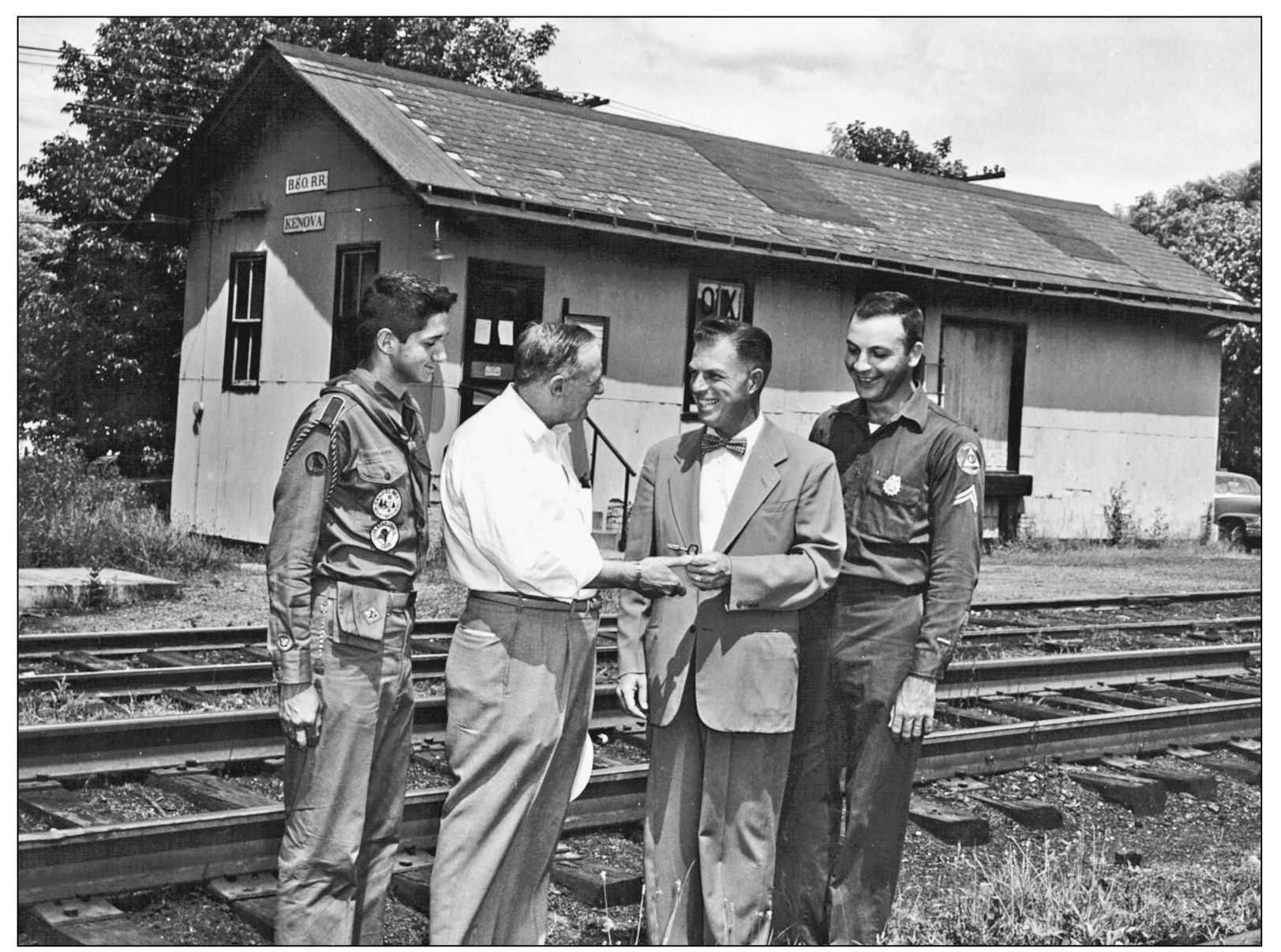
Even stations that are no longer needed can serve useful purposes, as seen here in May 1959. Clyde Farmer Jr., B&O’s smiling district freight agent, hands the keys to the Kenova depot to John Kemple, president of the Ceredo-Kenova Chamber of Commerce, for use as a new headquarters. Jimmy Cook, left, of Scout Troop 84, and Larry Hatten, a Civil Defense auxiliary policeman, look on. (Huntington AdJvertiser/Bob Withers collection.)

It is Monday, January 20, 1958, and since B&O’s Parkersburg-Kenova line has been dieselized now for three months, westbound train crews terminate their runs in Huntington. After all, the only reason they went to Kenova was to service and turn their steam locomotives. Here crews make plans to dismantle the old 55,000-gallon water tank at Kenova because it has been donated to Camp Arrowhead, the local Boy Scout camp near Ona, for use as a reservoir. The tank, constructed primarily of wood staves, will have to be completely disassembled for the move and reassembled in the spring. The camp already is supplied with a pressure system that provides water for drinking and cooking; the tank will be placed on top of a hill and will feed water by gravity into the camp’s sanitary system and showers. District Scout executive and camp director Edward J. Hall, in the checkered jacket, and Ervan L. E. Evans, B&O’s carpenter foreman pointing upward, are among the men in the photograph. (Huntington Advertiser/Bob Withers collection.)
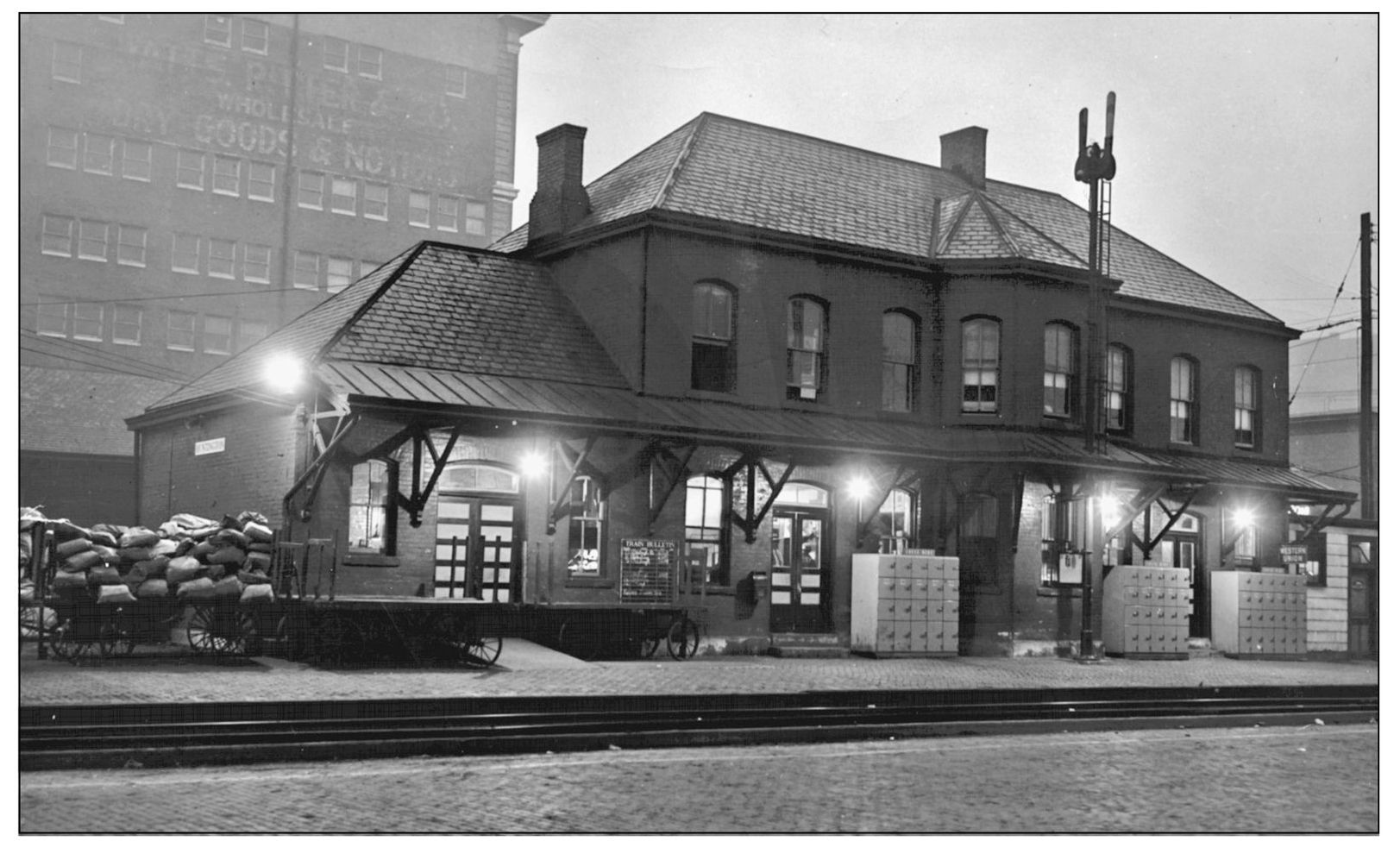
A couple of people can be seen milling around inside the Huntington passenger station in this 1953 photograph, even though it is just after 6:00 a.m. and barely daylight. Westbound Passenger Train 77 from Pittsburgh has arrived and departed—note the sacks of mail on the baggage cart—and eastbound Local 82 has picked up its freight cars and proceeded toward Parkersburg. (Charles Lemley/Bob Withers collection.)

Railroad structures do not have to be large to be functional. Here crossing watchman William Christopher Stevens enjoys an idle moment outside his shanty at the corner of Second Avenue and Tenth Street, a block west of the Huntington station, in 1908. When trains were coming, Stevens had to be especially vigilant—the main line went right down the middle of Second Avenue. (Herald-Dispatch/Bob Withers collection.)

Guyandotte became a part of Huntington in 1911, but for years it was an independent town. In fact, it served as B&O predecessor Ohio River Railroad’s western terminus from 1888 to 1892. The combination depot, with the agent/operator’s traditional bay window in between the waiting room and freight warehouse, was torn down in 1934. (Helen Diddle/Bob Withers collection.)

If ever there was a photograph proving that the depot was a small town’s gathering place, this is it. A group of young men pose for the camera at Glenwood in the early years of the 20th century. One wonders how many of them have bought a ticket to ride. (Minnie Finley/Gladys Paden collection.)
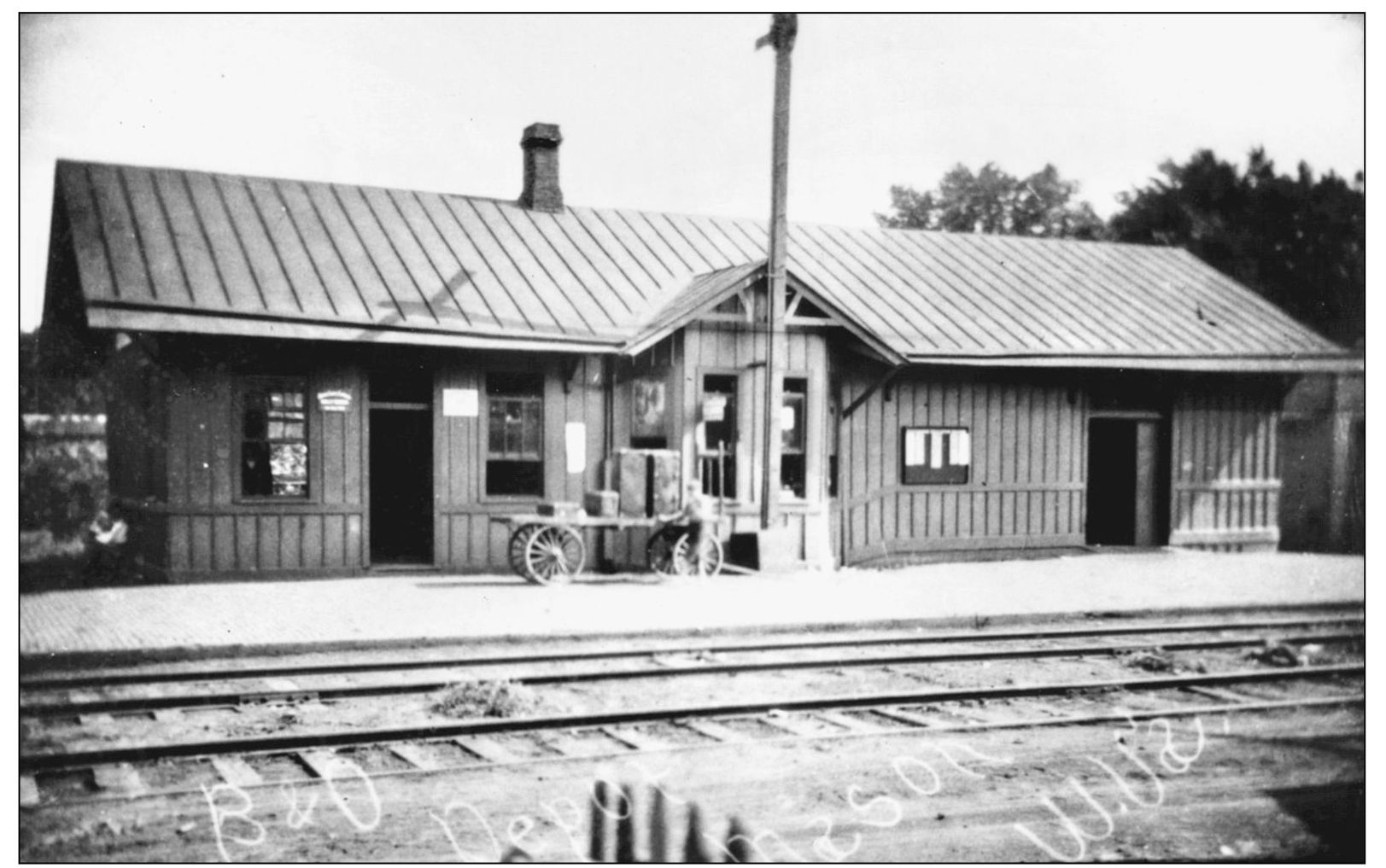
The Mason City depot was roughly halfway between Parkersburg and Kenova. Sharp eyes may see a little boy loafing next to the baggage cart and another seated at left in the shade of the waiting room. At one time, four pairs of passenger trains called here daily. (C. R. Davidson/Bob Withers collection.)

This photograph, taken in 1949, shows that the Mason City station has lost its waiting room in the intervening years. The building is where operator Cliff Bellamy studied telegraphy under Jimmie Diehl. The station is gone today, but passersby can see the old brick platform, including the cutout where the building’s bay window once stood. (Cliff Bellamy/Bob Withers collection.)
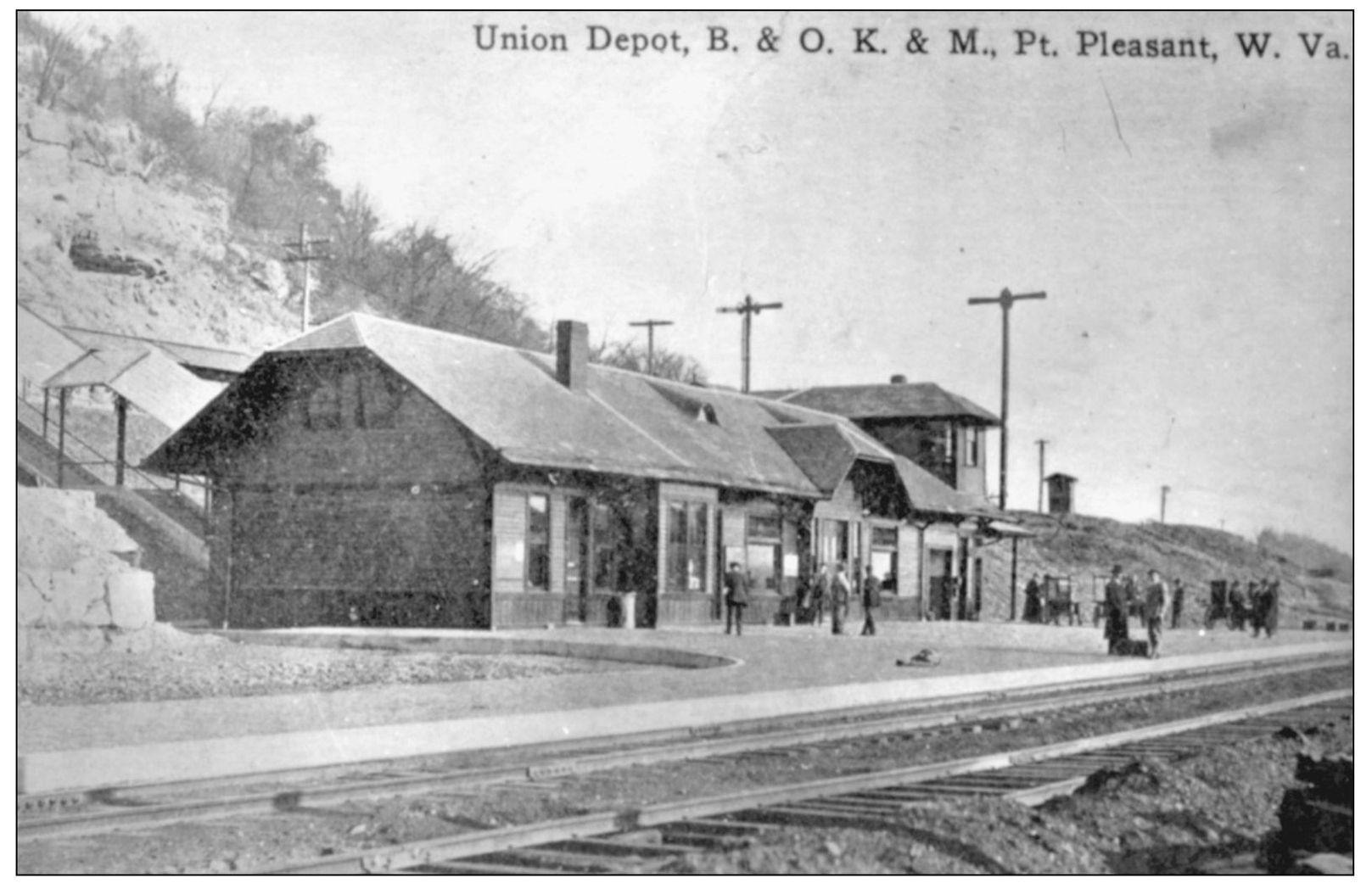
The Point Pleasant rail yard was turned inside out in 1909 when the New York Central (NYC) relocated its tracks from under the B&O line to the hillside above it. At NYC’s expense, the B&O passenger station, which dated from the 1890s, was expanded and became a union depot. NYC passengers reached the waiting room via the concrete steps at left. (Mid-America Paper Collectibles/Bob Withers collection.)

Local 82 departs Point Pleasant on Thursday, July 7, 1960. The old union depot at right is ready to be torn down, and its replacement, recently having been purchased from NYC and moved by rail into place (see photograph on page 78), is being renovated. (Bob Withers collection.)

This photograph shows the Point Pleasant depot as it looked in March 1987; it is similar in appearance today, except that some windows have been blanked. The building, which replaced an earlier structure in 1960, welcomed a few B&O passengers—mostly hardy railroad enthusiasts wanting to ride the overnight freight trains’ cabooses—until the advent of Amtrak in 1971. It also briefly served NYC passengers riding a self-propelled Rail Diesel Car across the Ohio River in the days immediately after the adjacent two-lane Silver Bridge collapsed on December 15, 1967, with a horrendous loss of life. The NYC shuttle lasted until a ferry boat could be placed in operation; the four-lane Silver Memorial Bridge that was built nearby to replace the fallen span was completed in just two years. The operator’s office in the station was closed on January 31, 1988. Now the building is used as an office by the Point Pleasant district run’s crew and serves as a base of operations for track maintenance forces in the area. (Herald-Dispatch/Bob Withers collection.)
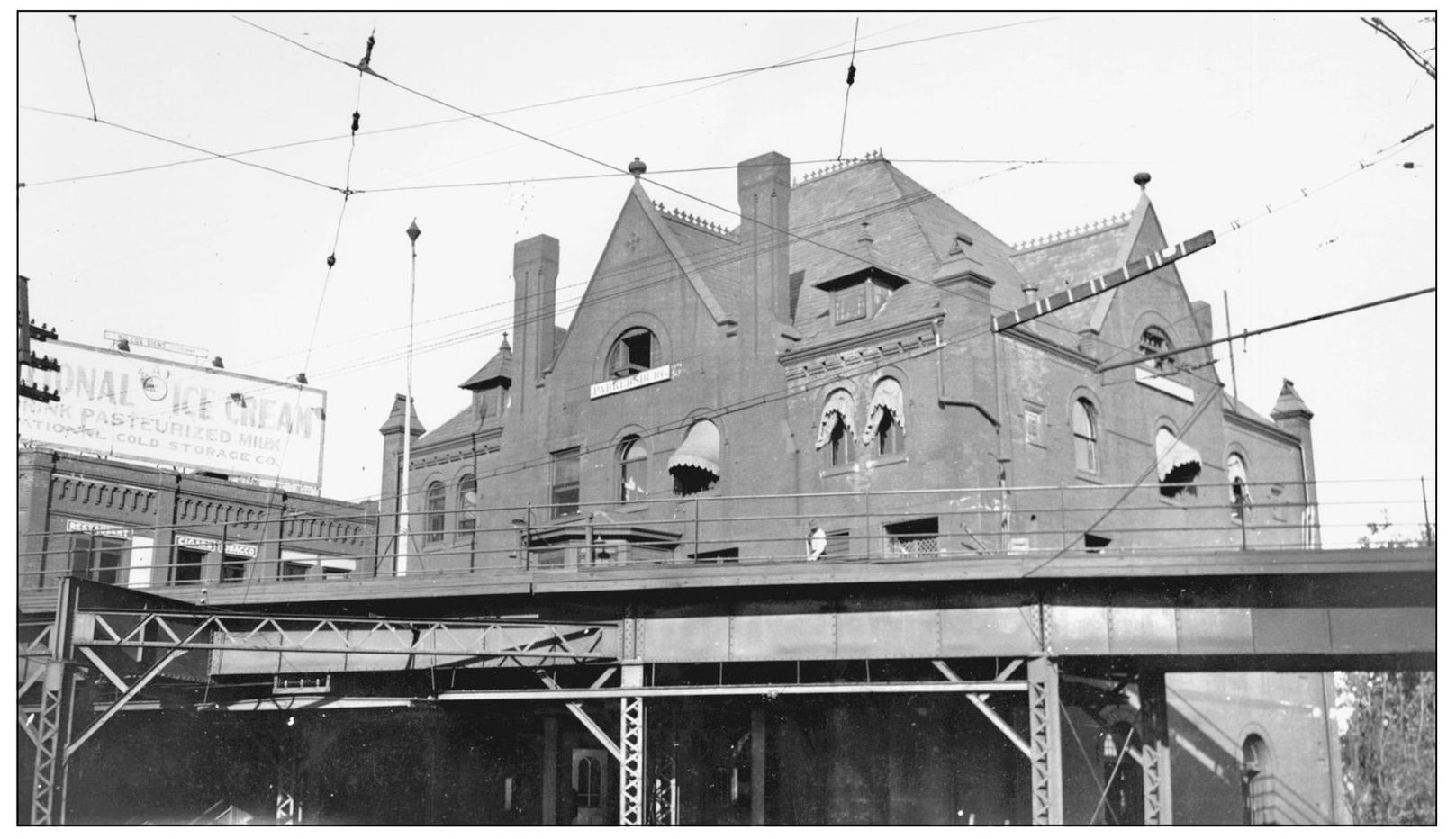
For most of its existence, two B&O stations served Parkersburg. Ann Street, above, was built in 1887 for passengers using the Wheeling-Kenova line. The track reached its waiting rooms on an elevated approach to the Little Kanawha River bridge. The ticket office was closed on April 26, 1954; thereafter, passengers paid cash fares. The building finally was razed in 1959 and its bricks used to pave city streets. Sixth Street, below, was situated just east of the Ohio River bridge and served the Baltimore—St. Louis main line. Built in 1857 and expanded in 1871, it was torn down in November 1973 to make room for a bank’s parking lot. A small block structure nearby served Amtrak’s periodic service until that, too, finally ended in 1981. (Above, Interstate Commerce Commission; below, Baltimore and Ohio Railroad Museum, Inc., Hays T. Watkins Research Library/Bob Withers collection.)

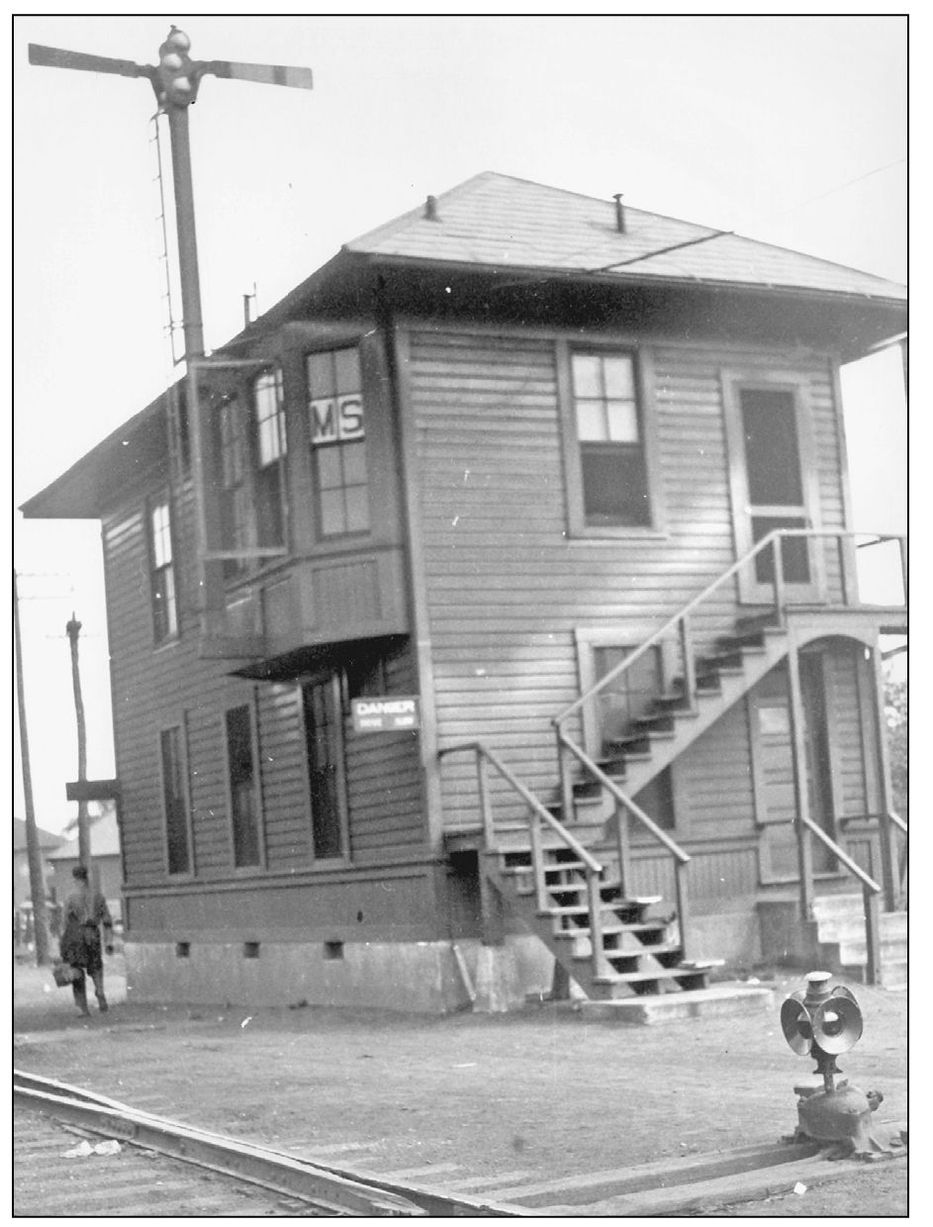
Towers were usually two-story buildings where telegraph operators received orders from dispatchers to deliver to train crews telling them where to meet trains, wait at certain points, proceed slowly on bad track, and so forth. In Parkersburg, MS Tower, at right, was the first such building in the Low Yard, and it was located near the Ohio River Railroad roundhouse and shops. It was eventually replaced by SX Tower, below, built nearer to Ann Street Station at the west end of the yard. The High Yard boasted several towers over the years, including OB, YD, and SY—the letters were their telegraph call signals. Later communications from dispatchers and other officers were received by telephone. The towers are all gone now, and communications are handled directly between dispatchers and crews by radio and fax. (Right, ICC/Bob Withers collection; below, John King collection.)

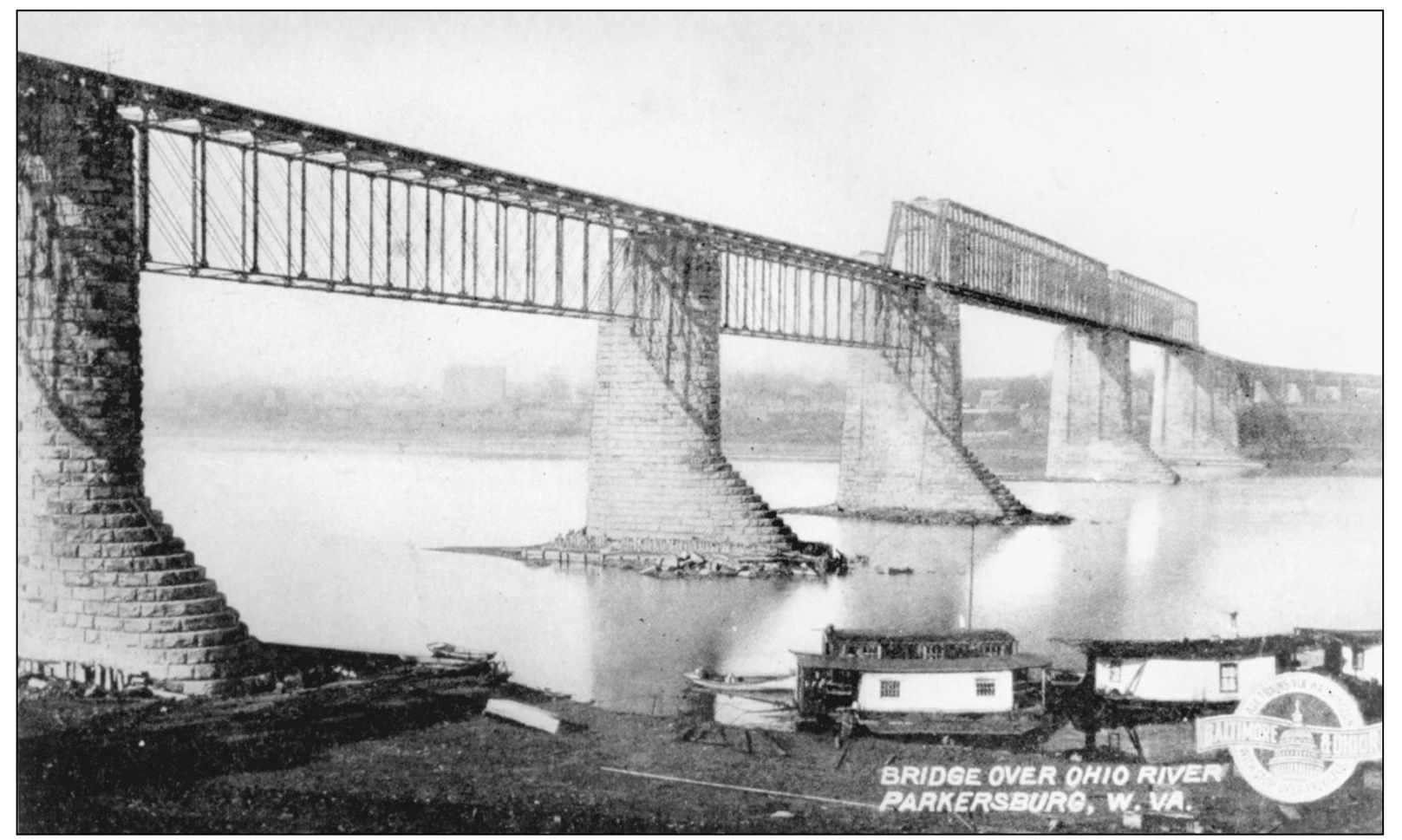
The original Ohio River bridge at Parkersburg was built in 1871. Before that, passengers reaching Parkersburg from the east boarded river steamers to connect with the Marietta and Cincinnati Railroad. Even though much of the old Baltimore-St. Louis line is gone, the span, rebuilt in 1904—1906, still gives yard crews access to plants on the Ohio side of the river. (Baltimore and Ohio Railroad Historical Society/Bob Withers collection.)
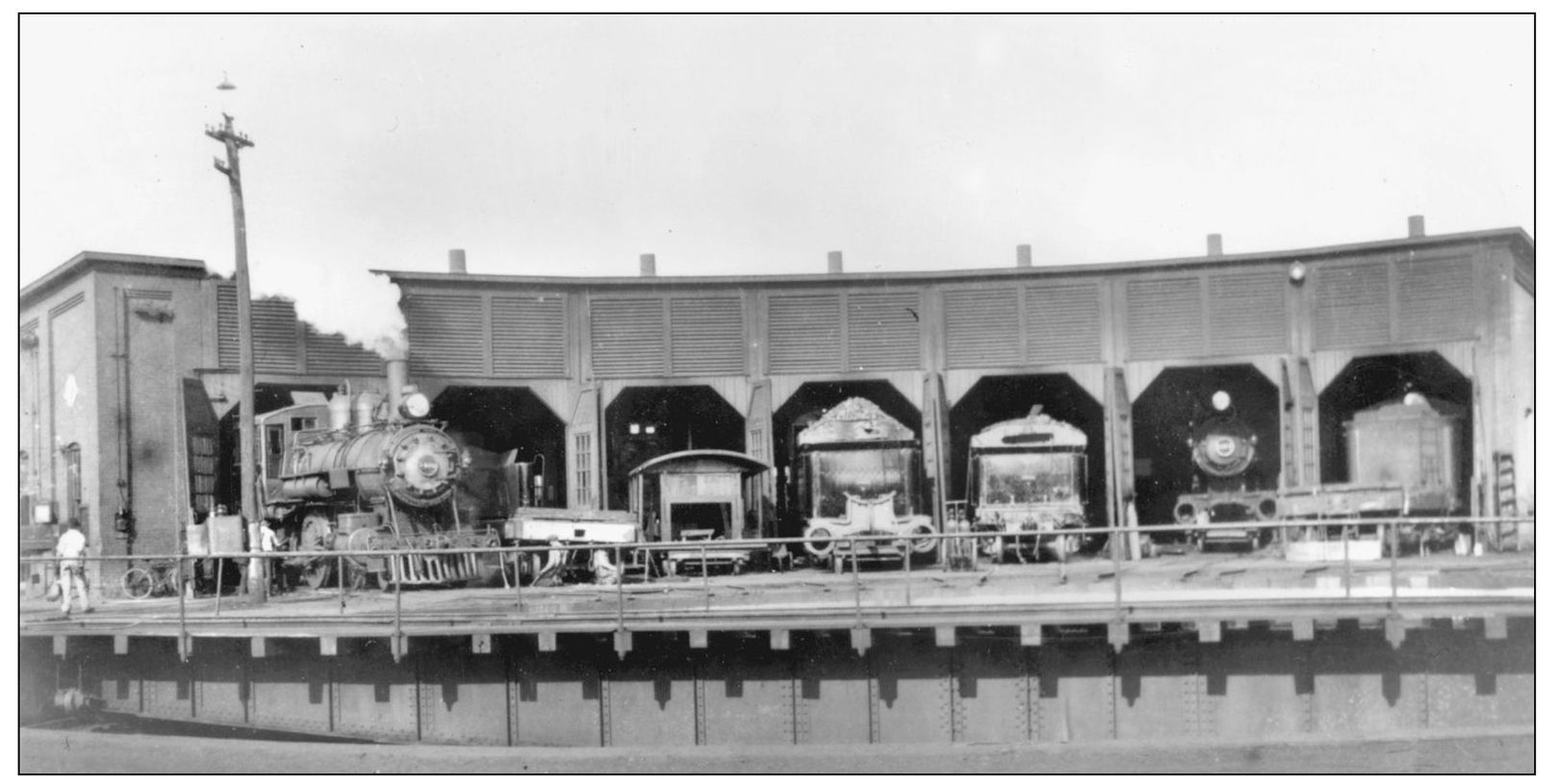
Once upon a time, Parkersburg also boasted of two roundhouses. This is the former Ohio River Railroad facility in the Low Yard c. 1920. It was destroyed fairly early, and locomotives for trains in both the High Yard and Low Yard were dispatched from the surviving facility near Depot Street in the High Yard. (John King collection.)

Railroad restaurants often were referred to as “greasy spoons” for obvious reasons. At least the M&M Restaurant, across Green Street from Parkersburg’s Sixth Street Station, was open 24 hours a day, and a weary passenger, railroader, or enthusiast could eat his or her fill of cheeseburgers at any hour. As passenger service declined and dining cars were removed, conductors began taking orders from their passengers well in advance of Parkersburg and dropping off notes at the next open office to have the M&M deliver lunches to their famished clientele on arrival in town. In one case in 1941, a harried chef on a troop train ordered 40 pounds of butter, six cases of pork and beans, four cases of tomatoes, 40 quarts of ice cream, 100 pounds of beef roast, 80 pounds of pork chops, and four issues each of Time and Newsweek. Most of it was delivered, on time, by the M&M. (Nancy Taylor/Bob Withers collection.)

This combination station is at St. Marys, located at the spot where the B&O’s private right-of way starts down Second Street. The photograph was made at noon on Sunday, April 24, 1955; into the 1960s, accommodating operators found ancient waybills and other forms long fallen and forgotten behind cabinets and turned them over to railroad enthusiasts. (W. J. B. Gwinn/Bob Withers collection.)
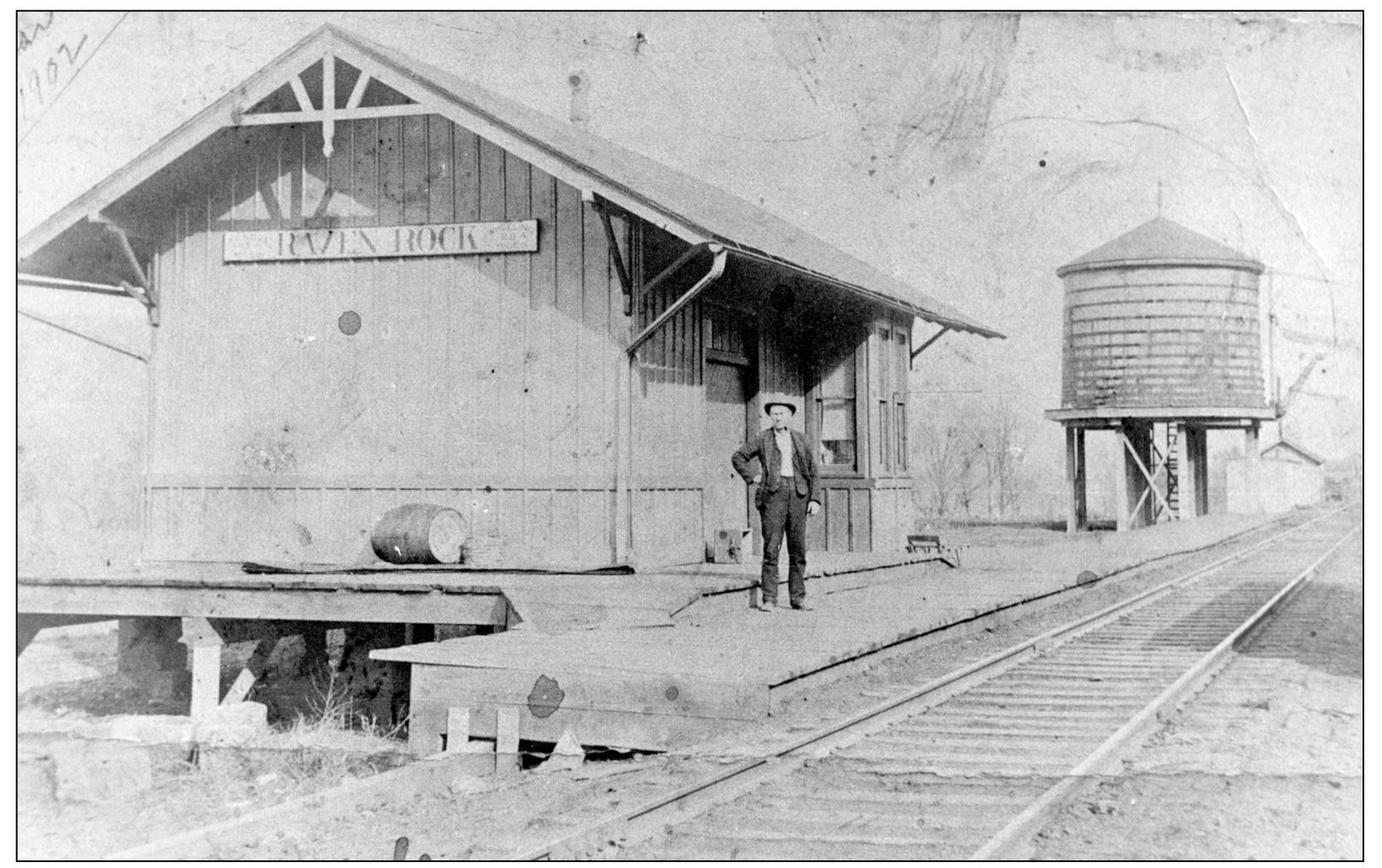
A lonely man-perhaps the ticket agent or an impatient passenger—awaits the next train at Raven Rock, population fewer than 100, in 1902. The helpful station sign not only informs passengers where they are, but also that they are 59.5 miles from Wheeling and 163.4 miles from Kenova. (Bob Withers collection.)

Train 73 calls at the quaint little station at Moundsville in the fall of 1955. In its glory days, one could board trains from here for Wheeling, Pittsburgh, Parkersburg, Huntington, Kenova, Fairmont, and Grafton. Later the building was used in 1971 as a backdrop in Fool’s Parade, a movie starring Jimmy Stewart. (J. J. Young Jr./Bob Withers collection.)
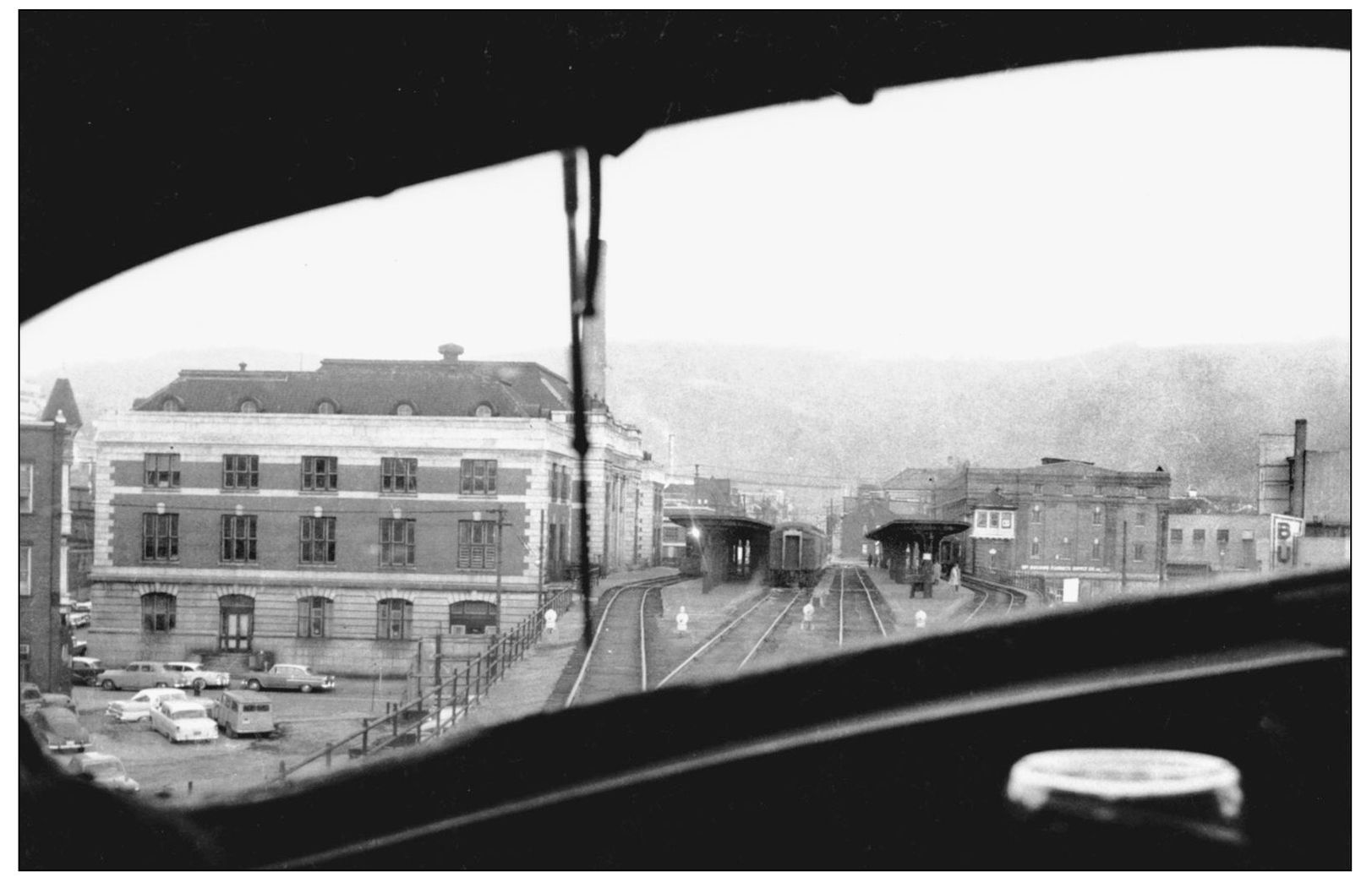
Wheeling’s massive French Renaissance Revival passenger station, seen here from the cab of a diesel locomotive in December 1950, was fashioned of handmade red brick with a granite base and Indiana limestone facing. At one time, the 1908 passenger palace was considered the largest such structure owned and operated by a single railroad; today it is home to the West Virginia Northern Community College. (J. J. Young Jr./Bob Withers collection.)
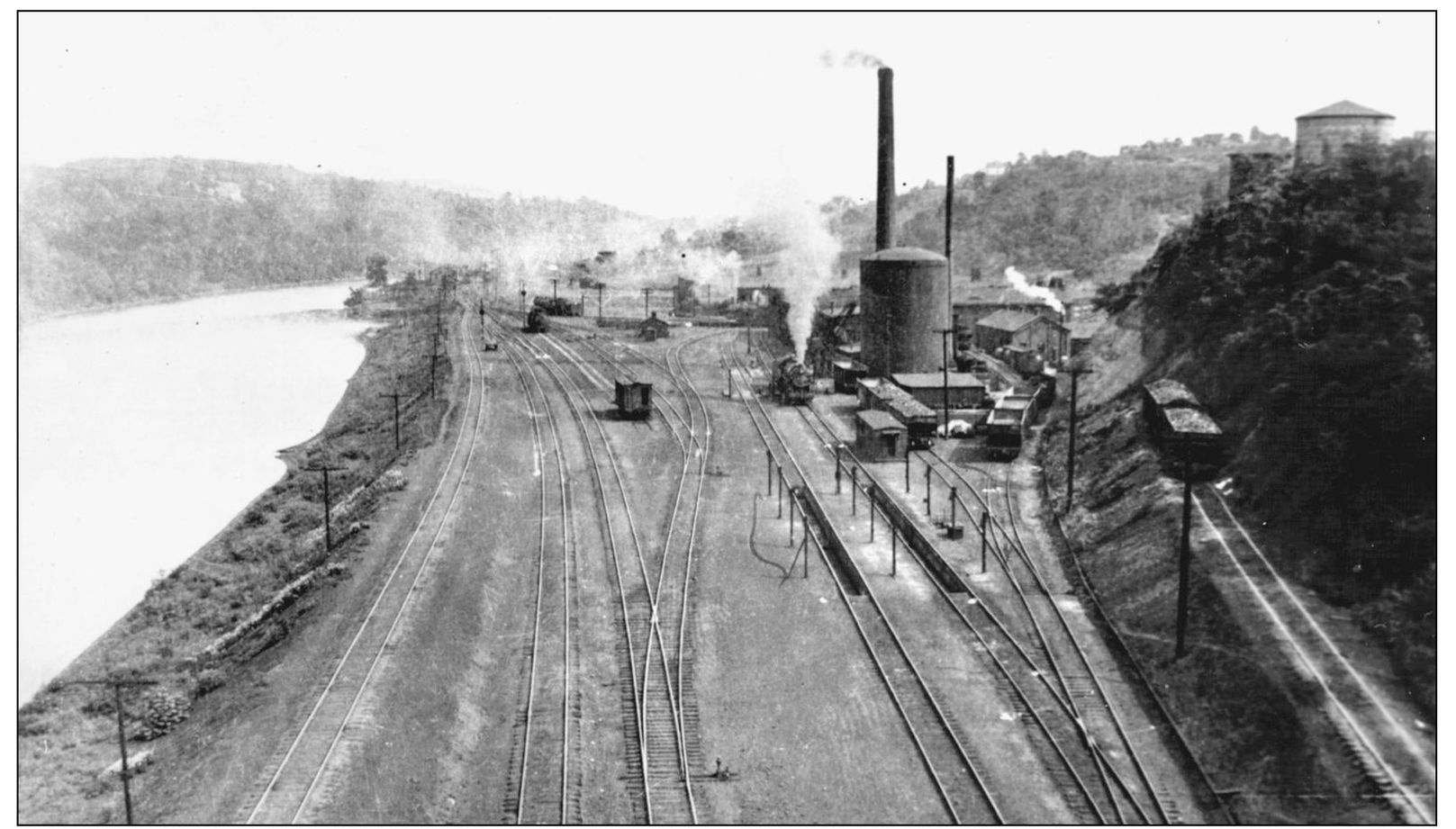
The B&O shop and roundhouse in Fairmont are seen from at a coaling station in the 1940s. The track at left is the main line to Connellsville, Pennsylvania. Note the two holes in tracks at right center. They are inspection pits, where the photographer checked the bottoms of incoming locomotives for 36 years. (O. V. Nelson/Bob Withers collection.)
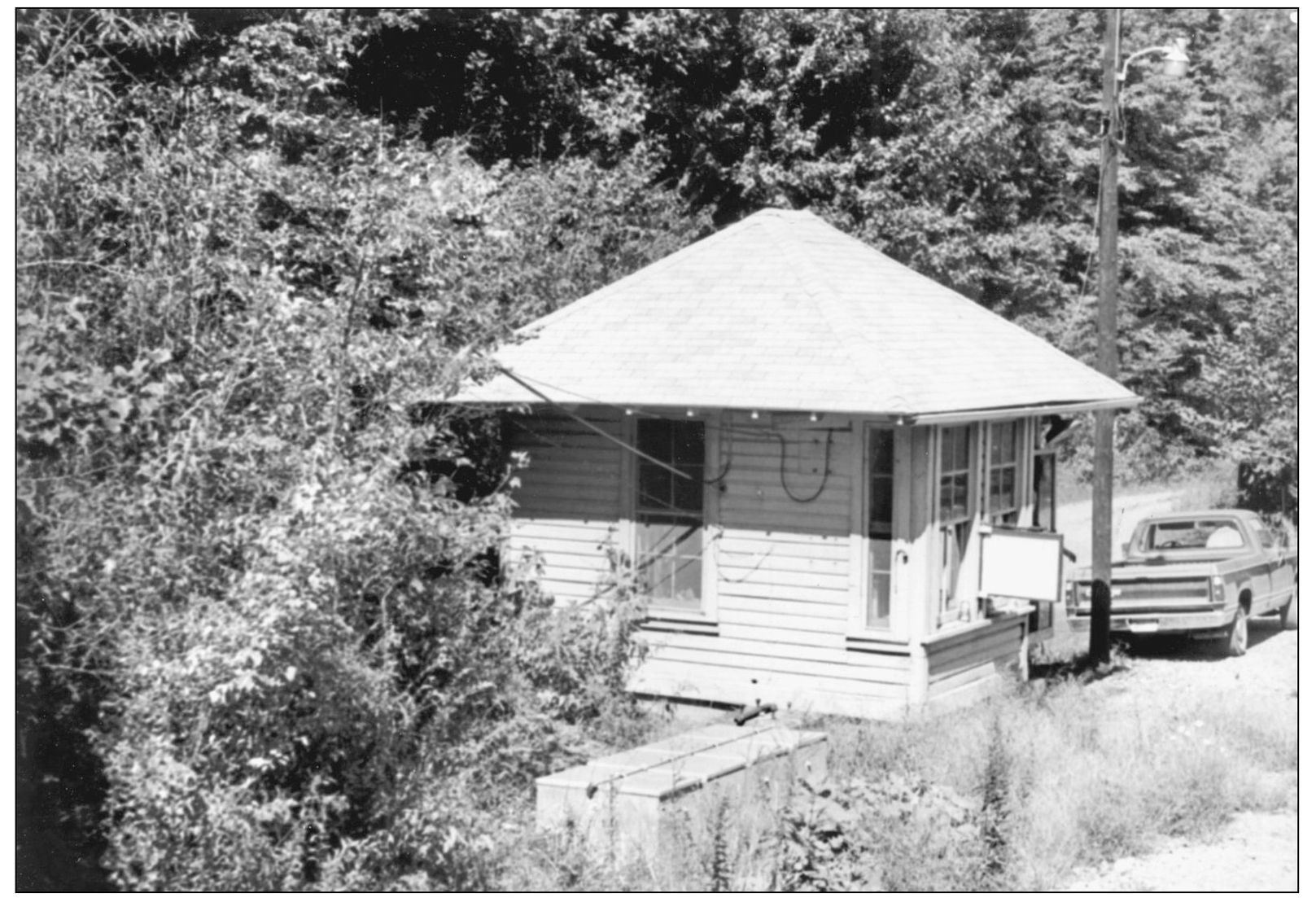
This tiny office is located at Berryburg Junction on B&O’s busy Grafton-Cowen coal-hauling line on Saturday, September 14, 1985. These days, the line is leased by CSX Transportation to the Appalachian and Ohio Railroad, and train operations are no longer governed by train orders delivered by operators located along the line. (Bob Withers collection.)
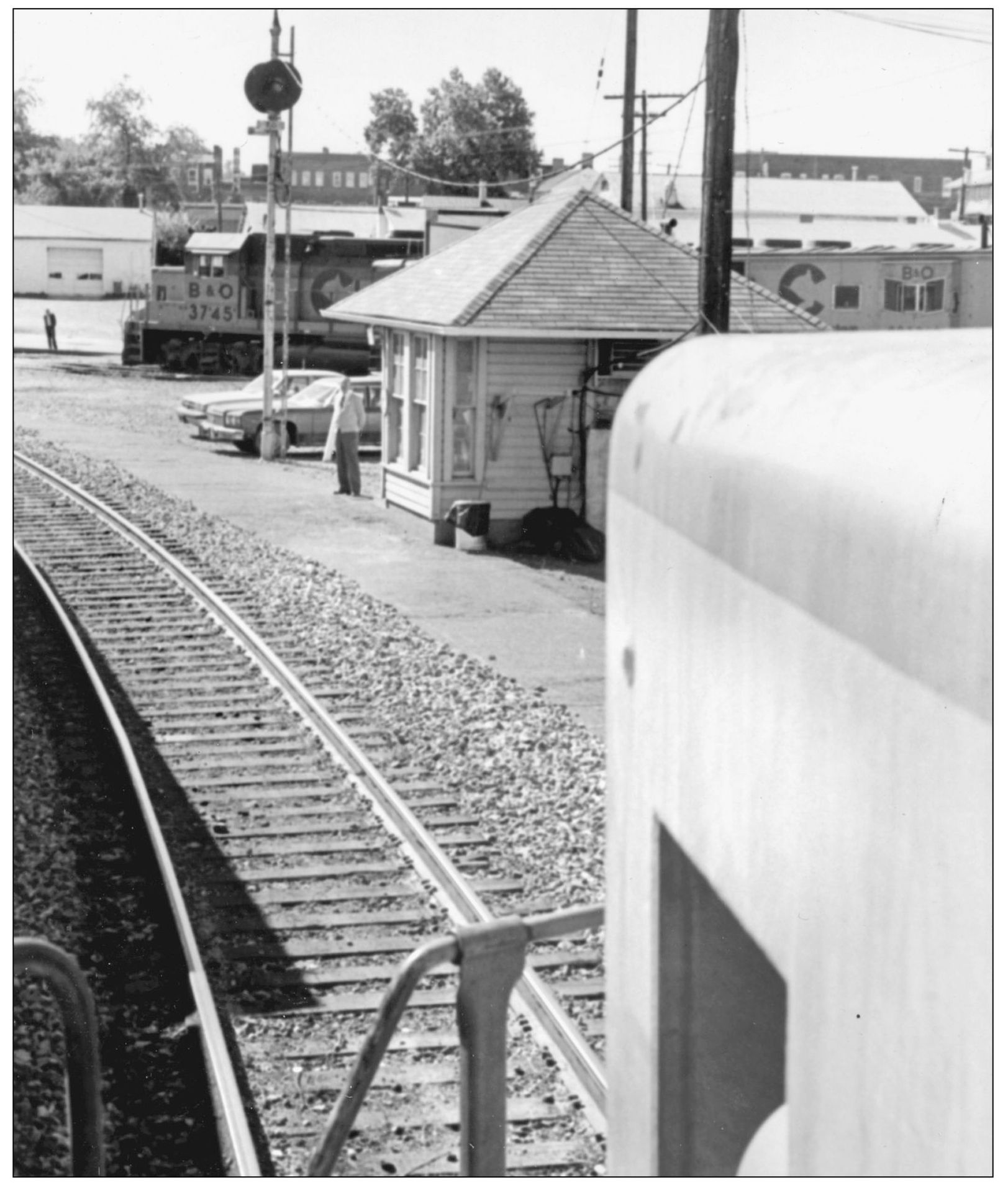
An excursion arrives at the operator’s office at Buckhannon—also on the Grafton-Cowen line—on Saturday, September 14, 1985. The 13-car special will continue 1.9 miles to a siding at Upshur, where the locomotives will run around the train and return its passengers to Grafton. At about the beginning of the 20th century, B&O recognized the potential of the region’s Gauley coalfields. The company began acquiring and tying together predecessor railroads and running branches up one hollow after another. Then, after World War II, the property was extensively renovated and strengthened. B&O hauled 3.4 million tons out of the area in 1950, compared to 14,000 tons in 1938. The company’s 1957 mine directory listed 77 loadouts along all lines south of Grafton, although some of them handled only a few cars at a time. By the mid-1960s, B&O was hauling an astonishing 2,500 loads a week out of the field. The Buckhannon office, seen from the excursion’s locomotive cab, also is gone today. (Bob Withers.)

This is one of B&O’s relatively rare one-story towers—WN—as seen at Cowen on Tuesday, July 21, 1964. Today the operators are gone and the building has been replaced by a modern steel structure that serves as an office. Cowen still serves as the busy southernmost operating terminal of the Appalachian and Ohio Railroad. (Jan G. Weiford/Bob Withers collection.)

The 1913 Ohio River flood destroyed the original Belleville station, but the town remained an important stop for years afterward. On Thursday, August 3, 1944, fireman Harry Nixon got in trouble with the brass because he neglected to tell his engineer on Train 72 that their meeting point with 73 had been changed until after the engineer stopped a second time to enter the siding at Belleville. (Bob Withers collection.)

Cairo, above, and Wolf Summit, below, both seen c. 1920, were stations on B&O’s busy Parkersburg-Clarksburg line. Most of the road’s important passenger trains and quick-dispatch freight trains between Baltimore and St. Louis rumbled through the territory at night, vying for valuable space on the main line and several sidings. Things were especially tight during World War II after adding the long trainloads of oil diverted from oceangoing freighters because of the threat of attack from German U-boats. Harold F. Lydick, Parkersburg’s terminal trainmaster, reported dispatching 26,091 freight cars in December 1941 alone, compared with 17,923 during the same month a year earlier. (Both photographs Baltimore and Ohio Railroad Historical Society, Inc./ Bob Withers collection.)
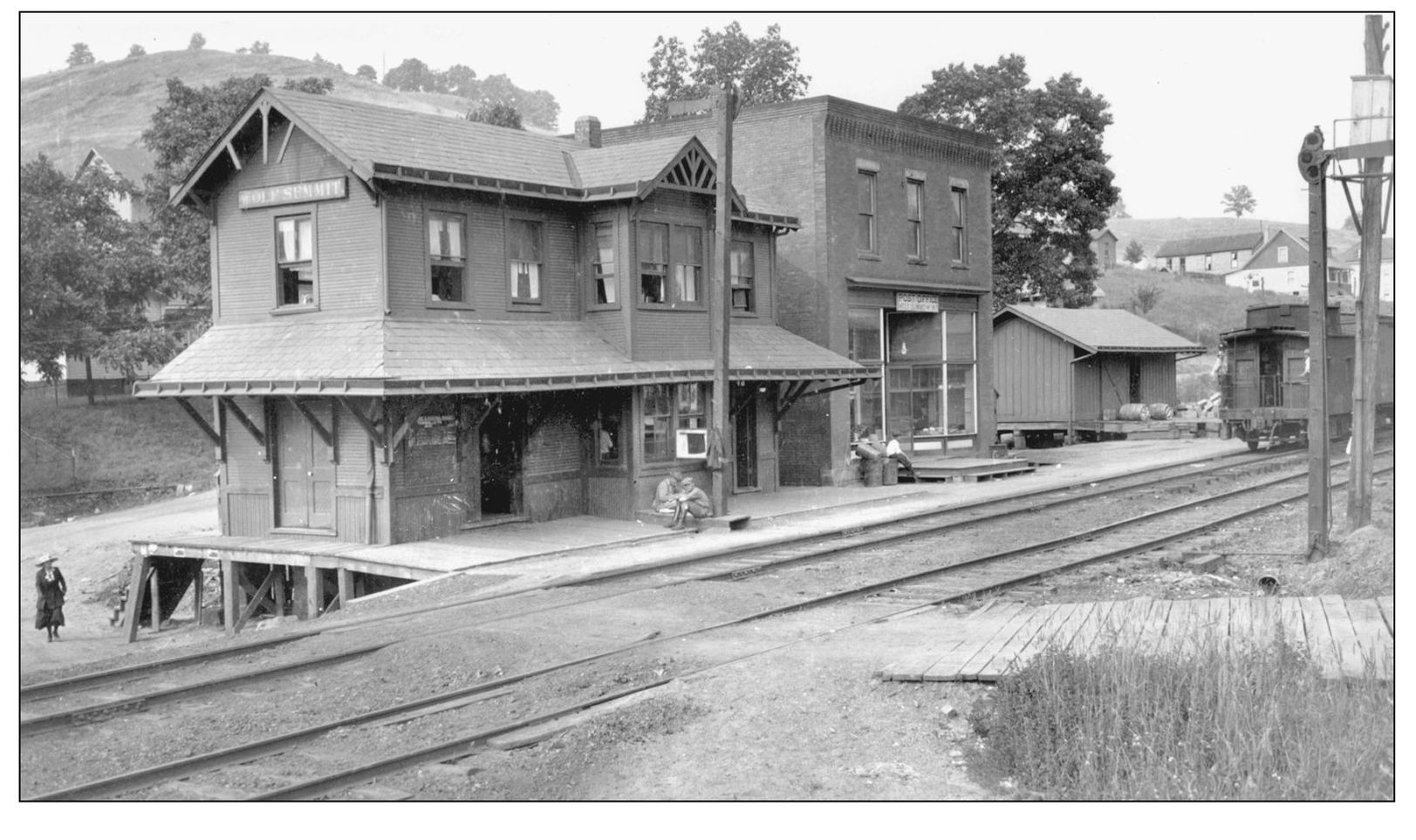

Train 72 Engine 1377 was the first train to cross the new $2-million bridge across the Kanawha River at Point Pleasant in Mason County. It’s 2:40 p.m. on Thursday, April 17, 1947, and once other bridges between “the Point” and Kenova are strengthened, larger locomotives will replace the elderly 10-wheelers. The 1887 bridge at right long outlived its usefulness, crippling the Ohio River line for years. (HeraLd-Dispatch/Bob Withers collection.)
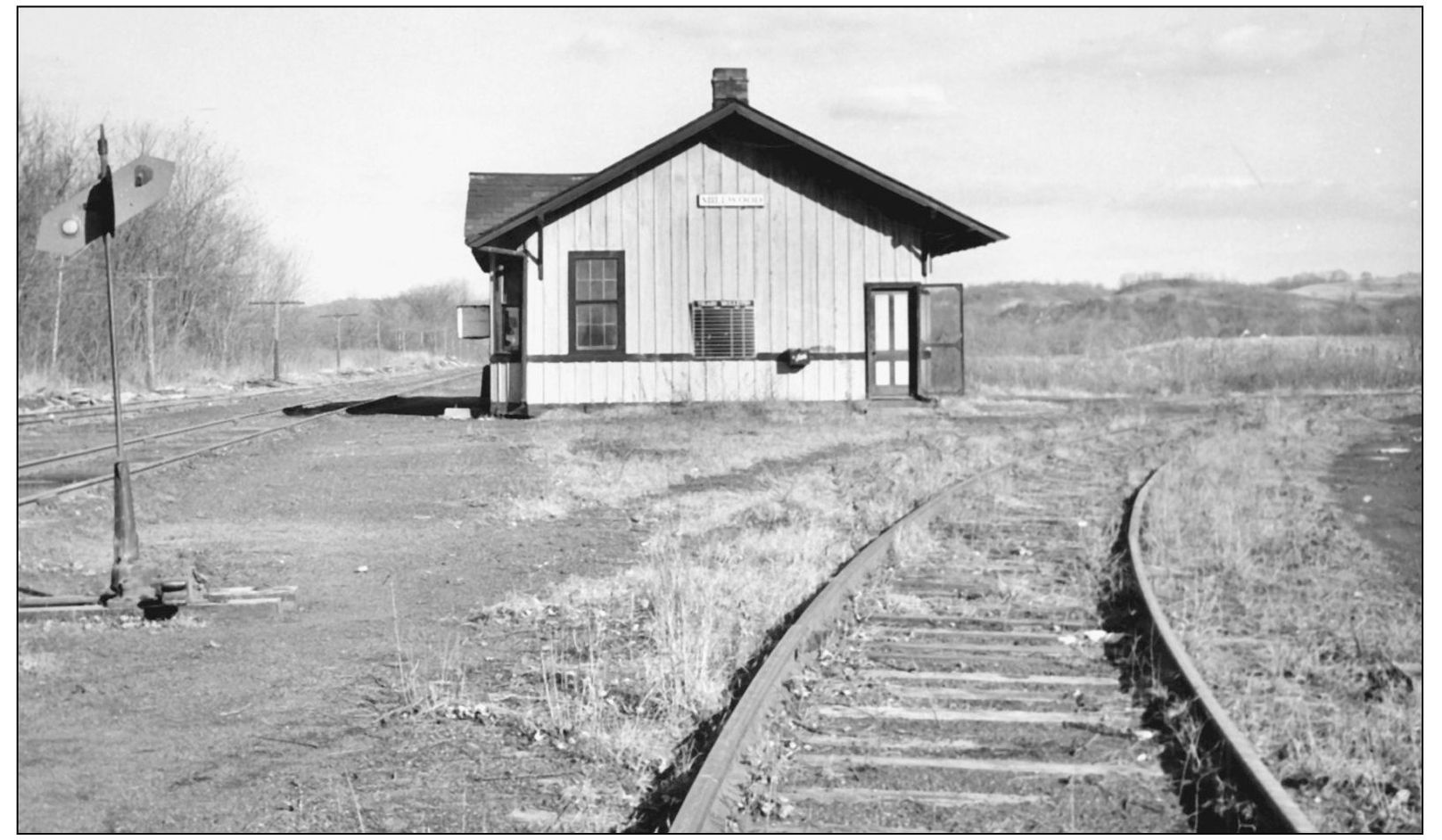
The station nestled inside the wye at Millwood is a scant five miles or so from the busy Kaiser Aluminum plant on the Ohio River line, but here it looks like it is at the ends of the earth. The photograph was snapped just after the agency closed on June 30, 1962. The old building died without ever having electricity or a telephone. (John P. Killoran/Bob Withers collection.)